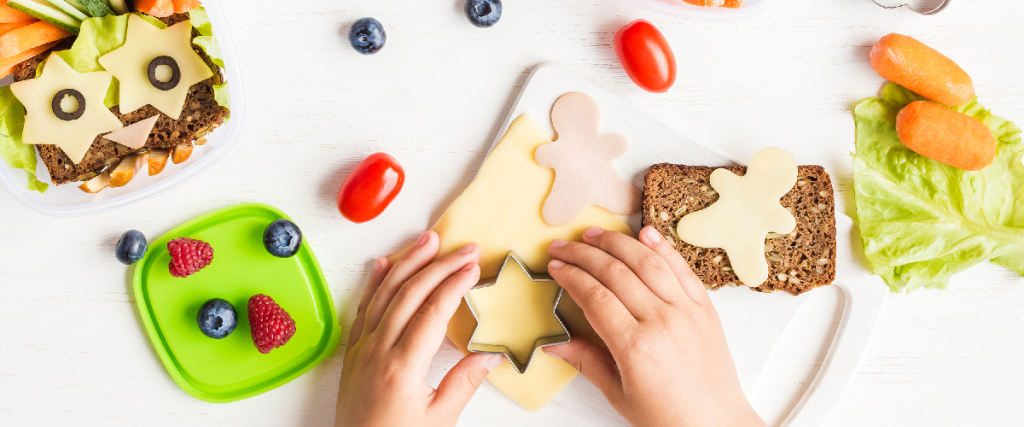Mealtime can often feel like a battleground when you have a picky eater at home. It’s a common struggle for parents, but rest assured, you’re not alone. Many families experience stressful dinners marked by refusals to try new foods, complaints about textures, or endless negotiations for an extra serving of dessert. Fortunately, there are practical strategies you can implement to create more positive mealtime experiences and encourage your child to develop healthy eating habits. This article will walk you through everything from understanding the roots of picky eating to introducing new foods in a fun and supportive way, all while maintaining a calm household environment.
Let’s explore the concept of picky eating and why it happens and how to handle it, and then dive into a variety of step-by-step techniques you can try. We’ll also talk about how to foster a positive family mealtime atmosphere and identify when it might be necessary to seek professional help. Moreover, you’ll find tips on how to seamlessly incorporate these changes into your meal planning for kids without sparking new battles or overwhelming your little ones.
By the end, you’ll be better equipped to address common mealtime battles, boost your children’s nutrition, and lay the groundwork for a lifetime of healthy eating habits.
Understanding Picky Eating

Normalizing Picky Eating
Picky eating is surprisingly common, especially in toddlers and preschoolers. Developmentally, children around ages two to six are naturally more hesitant to accept new flavors and textures. Furthermore, they may develop intense preferences for certain foods, such as wanting macaroni and cheese every day or refusing anything green. While this phase can be frustrating for parents, it often represents a normal stage of childhood.
One of the reasons that picky eater tendencies emerge is that toddlers are learning how to assert independence. Food is one of the few areas in a young child’s life where they can exercise some control. Consequently, saying “no” to certain foods might be less about disliking the taste and more about exploring autonomy.
Common Reasons Behind Picky Eating
- Developmental Stages: Children, especially toddlers, can be wary of unfamiliar foods due to an evolutionary trait that protects them from potentially harmful substances. As a result, they may need repeated exposures before feeling comfortable enough to taste or accept new foods.
- Sensory Sensitivities: Some children have heightened responses to textures, smells, or colors. For example, they might gag when offered mushy foods like mashed potatoes or become overwhelmed by the smell of fish. Recognizing these sensitivities can help you approach food introduction more thoughtfully.
- Control Issues: As mentioned, children often discover a sense of agency by dictating what they will or will not eat. When parents press too hard, kids may push back to reassert their independence.
- Previous Negative Experiences: A single traumatic choking incident or a case of an upset stomach after a meal can create an aversion to that food. Children may generalize that negative experience to other similar foods.
- Learned Behavior from Family: Kids pick up on parental attitudes. If parents openly express dislike for certain foods saying, “Ew, I hate broccoli!” children may adopt similar tastes or replicate that behavior. Likewise, seeing siblings or peers reject certain foods can reinforce picky habits.
In addition, it’s crucial for parents to recognise that not all picky eating is the same. Some children display mild selectiveness, whereas others may have more severe forms that require professional intervention. However, most cases can be managed with consistent, patient effort at home.
Practical Strategies for Introducing New Foods
Introducing new foods to a picky eater can feel like navigating a minefield. On the other hand, it’s an opportunity to get creative and playful, transforming mealtimes into a positive learning experience. The following strategies have helped many families move from mealtime battles to more cooperative and enjoyable dining experiences.
Gradual Introduction and the “Rule of 15”
A common guideline suggests that children may need up to 15 exposures to a new food before they accept it. In some cases, it could be fewer; in others, more. Likewise, it’s not only about tasting but also about seeing, smelling, and touching the food. Each exposure whether the child merely looks at it on the plate or pokes it with a fork helps them become more familiar with the new item.
Steps for Gradual Introduction:
- Small Portions: Start with a tiny portion just one or two bites’ worth so as not to overwhelm.
- No Pressure: Place the new food next to familiar foods, letting your child decide if they want to taste it or not.
- Encouragement, Not Force: Use positive language, such as “This broccoli is crunchy like little trees,” but avoid pressuring them to eat.
- Repeat: Offer the same new food again within the next week or so. Over time, this repeated exposure can decrease resistance.
By breaking the process into small steps and removing the pressure, you turn mealtimes into a low-stress environment where your child can explore new flavors on their own terms. Furthermore, tracking how many times your child has been introduced to a particular food can help you remain patient and consistent.
Creative Presentation

Children are often attracted to bright colors, fun shapes, and appealing textures. Therefore, making food visually exciting can stimulate their curiosity. For instance, you can slice vegetables like cucumbers and carrots into star or heart shapes, or arrange different colored foods in the shape of a rainbow on the plate.
- Fun Shapes: Use cookie cutters to shape sandwiches or fruit slices.
- Colorful Arrangements: Combine a variety of colorful fruits or vegetables to capture your child’s attention.
- Add a Dip: Sometimes, simply providing a flavourful dip like hummus, ranch dressing, or a yogurt-based sauce—can entice kids to try foods they would normally reject.
For example, if your child is resistant to carrots, consider pairing baby carrots with a small dish of hummus. Encourage them to dip and describe the texture or flavour in a positive way. Over time, even a hesitant child may become intrigued enough to give it a taste.
Involving Children in Meal Preparation
One of the most effective ways to reduce mealtime battles is to let kids take part in cooking or meal planning. In addition, involving children in the kitchen builds life skills and boosts their sense of accomplishment.
Age-Appropriate Tasks:
- Toddlers (2–3 years): Let them wash fruits and vegetables in a bowl of water, tear lettuce for salads, or pour pre-measured ingredients into a mixing bowl.
- Preschoolers (4–5 years): Allow them to stir batters, measure ingredients with cups or spoons, and assemble simple dishes like mini pizzas.
- Elementary-Aged Children (6–10 years): Teach them to safely chop softer items (with supervision), crack eggs, or read basic recipes.
- Preteens (11–12 years): Assign them more complex tasks, such as following a simple recipe from start to finish under your guidance.
Moreover, letting children help pick out produce at the grocery store or the farmers’ market can also increase their willingness to try their chosen items. When a child feels a sense of ownership over the meal, they’re more likely to be curious enough to taste the outcome.
Hiding Vegetables (With Caution)
Many parents swear by pureeing or finely chopping vegetables into sauces, casseroles, or meatballs. However, it’s important to balance this approach with a longer-term strategy of helping your child learn to accept vegetables openly. Sneaking vegetables is fine occasionally, especially if you’re concerned about nutritional shortfalls in a picky eater.
- Pureed Vegetables: Blend spinach or zucchini into pasta sauces, or add pureed carrots to meatloaf.
- Mixed Smoothies: A handful of kale or spinach in a fruit smoothie often goes unnoticed.
- Transparent Conversations: Over time, explain that certain ingredients like carrots are part of the recipe. Encourage your child to see the raw vegetables beforehand so that they build a relationship with them, even if they’re hidden in the final dish.
In conclusion, using hidden vegetables can help children receive essential nutrients. Just remember to keep introducing whole vegetables so that your child remains aware of what they’re eating and develops a genuine acceptance of these foods in their natural form.
Offering Choices (Within Limits)
Giving children some control over their meals can reduce mealtime battles, provided those choices are reasonable. For example, you might ask, “Would you like broccoli or carrots with your dinner tonight?” This approach offers your child autonomy yet still ensures they’re eating a vegetable.
- Limited Options: Present two or three acceptable foods rather than open-ended options that can overwhelm a child or lead to them choosing something entirely unhealthy.
- Structured Choices: “Do you want your chicken grilled or baked?” “Would you prefer apples or oranges for your snack?” These small decisions help kids feel involved and respected.
By consistently framing mealtime as a space where they have some say, you reduce power struggles. Nevertheless, be ready to stand firm if your child tests boundaries, such as demanding ice cream instead of a vegetable. Stick to the original two or three choices to maintain structure.
Positive Reinforcement
Positive reinforcement encourages good habits by rewarding desired behavior rather than focusing on the negative. Consequently, it can be a powerful tool for shaping children’s food preferences.
- Verbal Praise: Simple statements like “Great job trying that new food!” or “I’m proud of how you tasted the broccoli tonight!” can go a long way.
- Non-Food Rewards: Stickers, a special privilege (like choosing a board game for family night), or extra reading time can reinforce a willingness to try new foods.
- Celebrate Small Wins: If your child only licks a spoonful of a new soup, that’s still progress. Point out how brave they were for tasting something new.
However, using bribes like “If you eat your vegetables, you get dessert” can send the message that vegetables are a chore to endure for a sweet reward. Instead, aim to keep the atmosphere positive and praise them for exploring flavors without turning dessert into a bargaining chip.
Role Modeling
Children observe and mimic the behaviors of the adults around them, especially parents and older siblings. Therefore, if you want your child to embrace a variety of foods, you should do so yourself.
- Family Meals: Eating meals together allows children to see you enjoying different foods. When they see that you’re consistently eating vegetables and fruits, they’re more likely to follow suit.
- Express Enthusiasm: Make positive comments about your own food. For instance, say, “This roasted zucchini is so tasty!” or “I love how crunchy this apple is.”
Being a role model doesn’t require perfection. On the other hand, it does require consistency in showing enthusiasm and openness toward new or different foods.
Creating a Positive Mealtime Environment
In addition to offering strategies specifically targeting picky eating behaviours, it’s crucial to focus on the overall atmosphere at the table. A positive mealtime environment can significantly influence your child’s willingness to try new foods and reduce resistance.
Consistent Meal Times
Children thrive on routine. Establishing regular schedules for meals and snacks helps their bodies know when to expect food, potentially increasing appetite at those times. Moreover, it can reduce grazing on snacks throughout the day, which often spoils appetite for main meals.
- Set a Schedule: Aim for three main meals and two snacks at roughly the same times each day.
- Limit Grazing: Allow water between meals but avoid letting children constantly snack, especially on high-calorie or sugary items.
Having a consistent routine helps children feel secure, which can consequently decrease anxiety around trying new foods.
Family Meals
Whenever possible, eat together as a family. Family meals foster connection, provide structure, and allow parents to model balanced eating habits. Additionally, research shows that children who participate in regular family meals tend to have better overall nutrition.
- Encourage Conversation: Keep the talk light and positive. Avoid interrogating children about everything they ate, especially if you sense resistance.
- Shared Dishes: Place bowls and platters of food in the middle of the table so everyone can serve themselves. This can make children feel more in control, as they decide how much to put on their plate.
- Limit Mealtime to 20–30 Minutes: Prolonged meals can become tedious, especially for younger children. Keep it engaging but not overly drawn out.
Likewise, a shared family meal environment helps children observe others enjoying various foods, which can gradually pique their curiosity and willingness to taste.
Minimizing Distractions
Televisions, tablets, and smartphones can turn mealtime into background noise rather than a focused experience. For example, if a child is engrossed in cartoons, they may ignore their food altogether. Alternatively, they might mindlessly consume food without noticing texture, taste, or fullness cues.
- Screen-Free Policy: Encourage everyone, including adults, to keep devices off the table.
- Gentle Music: If you want some ambiance, opt for soft background music.
- Engaging Conversation: Ask about your child’s day, favourite activities, or something they learned in school. Conversation can also distract them from mealtime resistance and provide a more enjoyable experience.
Minimizing distractions allows children to pay attention to their hunger and fullness cues, thereby promoting a healthier relationship with food.
Avoiding Power Struggles
When kids sense that mealtime is a power struggle, they might become even more entrenched in their picky habits. Consequently, preserving a calm and respectful atmosphere is essential.
- Offer and Allow Refusals: Your role is to provide nutritious meal options. Your child’s role is to decide if and how much they will eat. Don’t force bites or punish them for not eating.
- Stay Neutral: Avoid turning mealtime into a lecture or a bribe-filled negotiation. Gently encourage, but don’t lecture about the importance of vegetables every minute.
- Defuse Tension: If your child is upset or refuses to eat, calmly let them know that’s their choice but remind them there won’t be an alternative meal. Then, continue enjoying your own meal.
Furthermore, children’s appetites can vary daily. Some days they may eat more, and other days less. As long as they’re growing and generally healthy, try not to let daily fluctuations spark worry.
Focusing on the Positive
Celebrating small steps can help children feel proud of their progress. Similarly, keeping the conversation light about what they “did eat” rather than what they “didn’t eat” fosters a more optimistic atmosphere.
- Acknowledge Effort: If they took just one bite of spinach, cheer them on for being adventurous.
- Avoid Comparisons: Don’t compare siblings or classmates. Statements like “Your sister ate all her vegetables, why can’t you?” can create resentment.
- Highlight Fun Aspects: Talk about the crunchy sound carrots make, or the sweetness of fresh peas. Engaging with sensory details can spark interest in trying more bites.
By focusing on what went well no matter how minor you encourage repeat behavior.
When to Seek Professional Help
Most picky eaters gradually expand their palate with patience and consistent effort from parents. Nevertheless, there are instances where picky eating might signal an underlying issue.
Signs That Warrant Further Evaluation
- Significant Weight Loss or Poor Growth: If your child’s weight or height trajectory falls below typical growth patterns, consult a pediatrician.
- Extreme Food Avoidance: Children who refuse entire food groups (especially protein sources) or become extremely distressed by the presence of certain foods may need professional support.
- Physical Symptoms: Chronic constipation, abdominal pain, or other digestive complaints can sometimes be related to restricted diets or anxiety around food.
- Rigid Food Rituals: If your child insists on specific brands, textures, or colors to the point that it disrupts daily functioning, it could be a sign of a sensory processing or anxiety-related issue.
Consulting a Pediatrician or Registered Dietitian
A pediatrician can rule out any medical reasons behind your child’s eating habits, such as swallowing difficulties, allergies, or gastrointestinal disorders. Moreover, if a doctor determines it’s safe and appropriate, they may recommend a registered dietitian who specializes in children’s nutrition. A dietitian can provide a detailed plan for addressing dietary gaps and ensuring adequate nutrient intake.
Behavioural Therapies
In some cases, children with extreme selective eating habits may benefit from occupational therapy (if sensory issues are predominant) or feeding therapy with a qualified professional. These specialists use step-by-step desensitisation techniques and incorporate play-based strategies to help children become more comfortable with new foods.
In conclusion, while most picky eaters will improve with home-based interventions over time, do not hesitate to seek professional help if you observe signs that indicate a more serious challenge.
Putting It All Together, A Sample Mealtime Plan
It’s one thing to read about these strategies, but applying them consistently can feel overwhelming. Therefore, to help you visualize how these tips can work in harmony, here’s a hypothetical one-day plan that integrates many of the techniques we’ve discussed.
Breakfast
- Meal: Whole-grain cereal with milk, sliced strawberries, and a small side of scrambled eggs.
- Picky Eater Strategy: If eggs are unfamiliar or disliked, start with a small portion. Allow your child to decide if they want to taste it. No pressure, just gentle encouragement.
- Positive Reinforcement: Praise any effort to explore the eggs, even if it’s just a sniff.
Mid-Morning Snack
- Meal: Yogurt topped with granola and blueberries.
- Strategy: If blueberries are new, add only a few and let your child stir them in if they’d like. Involve them in the process by letting them scoop the granola.
Lunch
- Meal: Mini whole-wheat pizzas with tomato sauce, mozzarella, and finely chopped spinach.
- Involving Children: Let them spread the sauce and sprinkle cheese. Mention that you’re adding a “secret superhero ingredient” (spinach), but don’t force them to watch if it creates anxiety.
- Creative Presentation: Shape the mini pizza dough into fun shapes like hearts or stars if time allows.
Afternoon Snack
- Meal: Apple slices with peanut butter.
- Choice Offering: “Would you prefer peanut butter or almond butter?” This gives them control yet both options are healthy.
Dinner
- Meal: Grilled chicken, brown rice, roasted carrots, and a fruit salad.
- Family Meal: Eat together and serve the foods family-style. Everyone can help themselves.
- Gradual Introduction: If carrots are new, place one or two on your child’s plate. Mention you love how sweet roasted carrots taste, but don’t insist they eat them.
- No Devices: Keep the TV off, and put phones away to encourage focused family time.
Bedtime Routine
After dinner, tidy up as a family and emphasize how everyone contributed, either by cooking, setting the table, or trying something new. Offer sincere praise for any progress made during the day, reinforcing the idea that mealtime is a shared responsibility, not a battlefield.
Other Useful Resources
If you’d like more detailed information or further guidance, explore these helpful resources:
- Toddler Nutrition 101: A comprehensive guide on toddler feeding, portion sizes, and nutrient requirements.
- American Academy of Pediatrics: Offers trusted medical advice on children’s nutrition, growth, and developmental milestones.
- Kids Eat Right : An initiative by registered dieticians that provides evidence-based advice and kid-friendly recipes.
These resources align with the advice provided here, giving you additional reassurance and evidence-based strategies for dealing with mealtime battles.
Tips and Encouragement
Even the most consistent and well-prepared parents face days when a child simply refuses to eat anything but crackers. However, maintaining a calm demeanor and a long-term perspective is key.
- Patience is Crucial: Change rarely happens overnight, especially with deeply ingrained eating preferences. Moreover, children’s tastes evolve over time; yesterday’s rejection can become tomorrow’s favourite food.
- Keep a Food Journal: Documenting what and how much your child eats each day can help you see patterns, identify nutrient gaps, and celebrate progress.
- Stay Flexible: Life events such as travel, new siblings, or changes in routine can temporarily disrupt eating habits. Therefore, be adaptable and return to your established strategies as soon as possible.
- Encourage Fun and Curiosity: Mealtime should be about exploration and enjoyment. Ask your child questions like, “What does this food smell like?” or “What does the texture remind you of?” Fostering curiosity can shift the focus away from “must eat” to “discover and explore.”
In the grand scheme, your primary goal is to nurture a lifelong positive relationship with food. Consequently, focusing on a variety of nutritious meals, consistent routines, and positive reinforcement will help your child gradually broaden their palate.
Conclusion: Progress, Not Perfection
Dealing with picky eaters can undoubtedly test your patience. In addition, each child is unique, which means no single strategy will work for everyone. However, by combining the various techniques outlined here gradual food introduction, creative presentation, positive reinforcement, and a calm mealtime environment you can make significant strides in improving your child’s eating habits.
Remember that progress isn’t about getting your child to eat everything on their plate immediately. It’s about tiny steps tasting a new vegetable, tolerating a previously loathed food on the plate, or simply showing interest in how something is cooked. Therefore, celebrate these small victories and maintain an optimistic outlook. Over time, these incremental improvements can add up to a more varied diet and a less stressful daily routine for the entire family.
Above all, trust your instincts and pay attention to your child’s cues. If you suspect more serious issues, don’t hesitate to consult healthcare professionals for tailored advice. Otherwise, remain confident in your ability to foster healthy eating habits in your children. With consistency, empathy, and a dash of creativity, you can transform mealtime from a battlefield into a space of growth, learning, and family togetherness.






